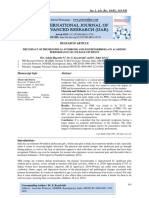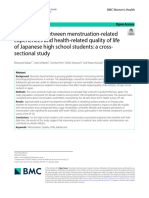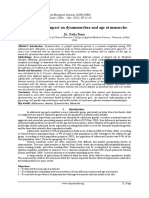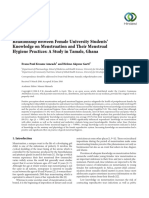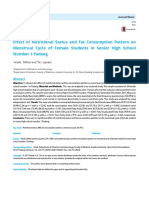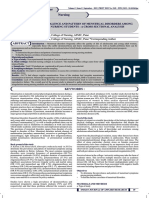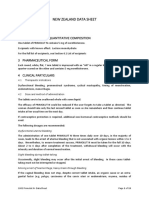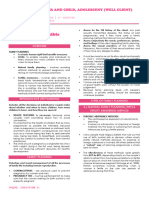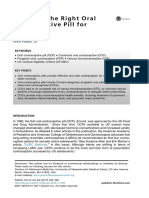0% found this document useful (0 votes)
21 views8 pagesChapter No 1
The study investigates the impact of dietary habits and hygiene practices on menstrual health among young women aged 18 to 28 in Pakistan, highlighting issues such as nutritional deficiencies and inadequate menstrual hygiene that contribute to significant health problems. It emphasizes the need for improved access to nutritious food, sanitary products, and comprehensive education to enhance menstrual health outcomes. The research aims to provide insights for targeted health education programs and policies to support the well-being and academic performance of undergraduate female students.
Uploaded by
organizationalbehaviors3Copyright
© © All Rights Reserved
We take content rights seriously. If you suspect this is your content, claim it here.
Available Formats
Download as DOCX, PDF, TXT or read online on Scribd
0% found this document useful (0 votes)
21 views8 pagesChapter No 1
The study investigates the impact of dietary habits and hygiene practices on menstrual health among young women aged 18 to 28 in Pakistan, highlighting issues such as nutritional deficiencies and inadequate menstrual hygiene that contribute to significant health problems. It emphasizes the need for improved access to nutritious food, sanitary products, and comprehensive education to enhance menstrual health outcomes. The research aims to provide insights for targeted health education programs and policies to support the well-being and academic performance of undergraduate female students.
Uploaded by
organizationalbehaviors3Copyright
© © All Rights Reserved
We take content rights seriously. If you suspect this is your content, claim it here.
Available Formats
Download as DOCX, PDF, TXT or read online on Scribd
/ 8




















